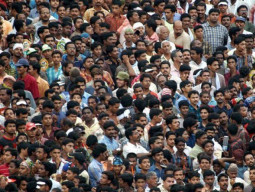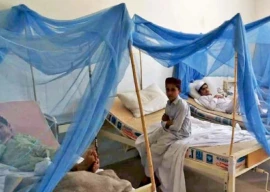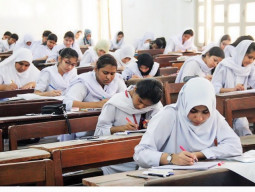
ISLAMABAD: Delay in holding population census, due since 2008, is compounding already contentious issues and exposing inherent flaws in the country’s bureaucracy.
A recently compiled official report showed disturbing trends: different political interest groups in various provinces were actively distorting census results for the past three decades to maximise political and economic gains.
Census 2016: the way forward
Population, the main yardstick, is assigned 82 percent weightage in allocation of funds to the federating units from the national exchequer via the National Finance Commission (NFC) Award. Seats in the National Assembly and provincial legislatures are also allocated on the basis of population.
This trend started even before the fourth population census that was held in 1981, official records showed.
A report recently submitted before the Supreme Court showed that a House Listing Operation (HLO) – a precursor of the population census, carried out in 1991, before the fifth census was held in 1998, contained ‘severe data distortions’.
A similar trend was witnessed in HLO held in 2011.
According to the 1991 HLO, Punjab had an average population growth rate of 2.81 percent during the 1981-90 period, almost consistent with 2.7 percent witnessed in 1972-81.
Then NWFP, now called Khyber-Pakhtunkhwa, would have had an average annual population growth rate of 3.65 percent for 1981-90, marginally higher than 3.3 percent population growth in 1972-81.
For Sindh, house listing surveys carried out by local government servants, mainly government school teachers, showed an expected annual growth rate of 9.93 percent from 1980-90 far higher than 3.6 percent in 1972-81.
Overdue headcount: SC seeks more robust briefing on census
Interestingly, Karachi division was shown having annual growth rate of 5.8 percent while rural Sindh witnessed an average population growth rate of 12.12 percent during this period. The figure was beyond any rational estimate.
Data manipulations had started in Balochistan even before the 1981 census.
According to 1991 HLO data, the sparsely-populated province was estimated to have a population growth of 7.81 percent a year between 1981 and 1990.
Exaggerated figures were shown in the HLO carried out a decade ago showing an average annual population growth rate of 7.1 percent.
Mutual competitiveness of two main ethnic groups-Pashtoons and Baloch, competing to outnumber each other was the main factor behind such arbitrarily exaggerated figures.
The presence of a large number of Afghan refugees in northern Balochistan, and inter-clan tribal rivalries within each group were other contributing factors for such gross distortions.
Services of the armed forces were secured for conducting a credible headcount and national census in 1998. Military personnel were deployed with all civilian enumerators to counter-check household information. The results were quite different from the estimates of HLO 1990.
According to the 1998 population census Khyber Pakhtunkhwa registered an annual population growth of 2.82 percent during 1981-98 while in FATA it was 3.6 percent.
In Punjab, population achieved an overall growth rate of 2.64 percent, Balochistan 2.47 percent and Sindh 2.8 percent.
The last House Listing Operation, carried out in March-April 2011, again showed anomalies.
If the results of 2011 HLO are to be believed, the country witnessed an overall annual population growth rate of 2.99 percent during 1998-2010 period against 2.69 percent in 1981-1998.
Based on this survey, whose validity is doubtful, it is estimated that Punjab had an annual growth rate of 1.67 percent – a decline of 0.97 percent against 1981-1998 figures.
Census by March next, says Zahid Hamid
For Khyber Pakhtunkhwa, the estimated population growth rate is estimated to be 3.23 percent and in FATA, it is 3.76 percent.
The population growth rate for Sindh is shown to be 4.66 percent against an actual growth rate of 2.8 percent determined in 1998 census.
Similarly, the HLO-2011 figures for Balochistan showed an estimated annual population growth rate of 6.9 percent against 2.47 in the 1998 census.
According to these estimates, Punjab’s population witnessed 24.1 percent increase during this period. Khyber Pakhtunkhwa’s population grew by 51.6 percent, Sindh 81.5 percent, Balochistan’s population somehow witnessed a spike of 139.3 percent between 1998 and 2010.
Islamabad showed 43 percent increase, Azad Kashmir 22.2 percent and Gilgit-Baltistan 63.1 percent increase in their population during the same period.
Distortions in the official report are further corroborated by divergent stance adopted by different political parties, especially from Balochistan.
Baloch nationalist parties alleged that hundreds of thousands of Afghan refugees were assimilated in Pashtoon-dominated areas and they should be repatriated before the census. Nationalist parties feared a change in demographic composition.
They cite the 1998 census, according to which the Baloch population was 70 percent and Pashtoons 30 percent.
Pashtoon nationalist parties contradict this: they claim that the ethnic composition of Pashtoons and Baloch it was around 50 percent each.
“Traditionally, it was 50 percent Pashtoons and 50 percent Baloch. We can produce documented records dating back to the British era. During the tenure of a Baloch Chief Minister in the province in 1998, they distorted the figures,” claimed Senator Usman Kakar, who is the parliamentary leader of PkMAP, the main Pashtoon nationalist party in Balochistan.
With its demand for the formation of a unified province comprising all Pashtoon areas of Baluchistan, Khyber Pakhtunkhwa and Federally-Administered Tribal Areas (FATA), PkMAP is toughening its stance on the issue. Any headcount conducted without taking appropriate measures to ensure impartiality would further exacerbate the already fragile situation in the province.
Published in The Express Tribune, November 7th, 2016.






















































COMMENTS
Comments are moderated and generally will be posted if they are on-topic and not abusive.
For more information, please see our Comments FAQ